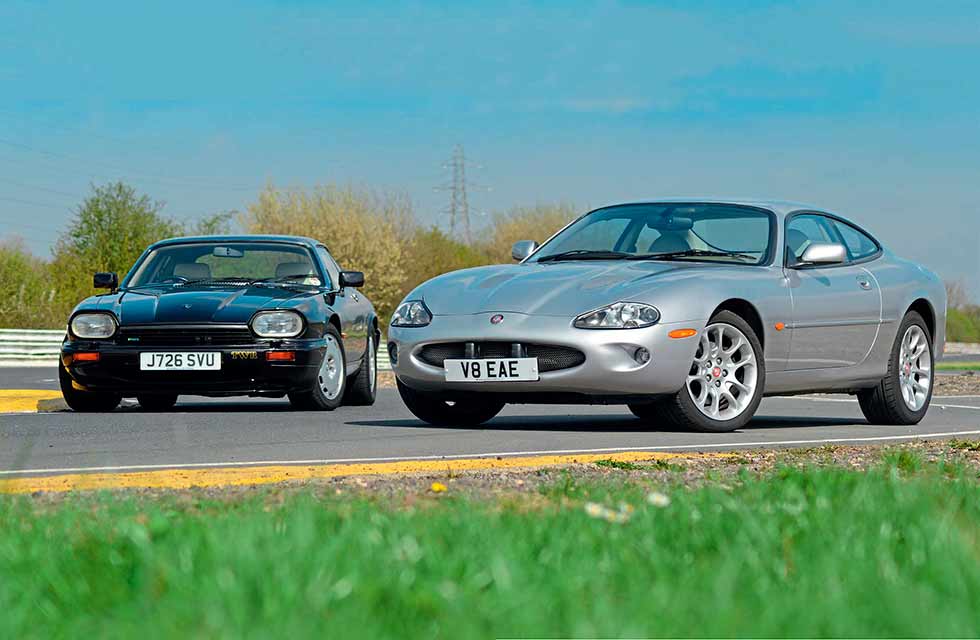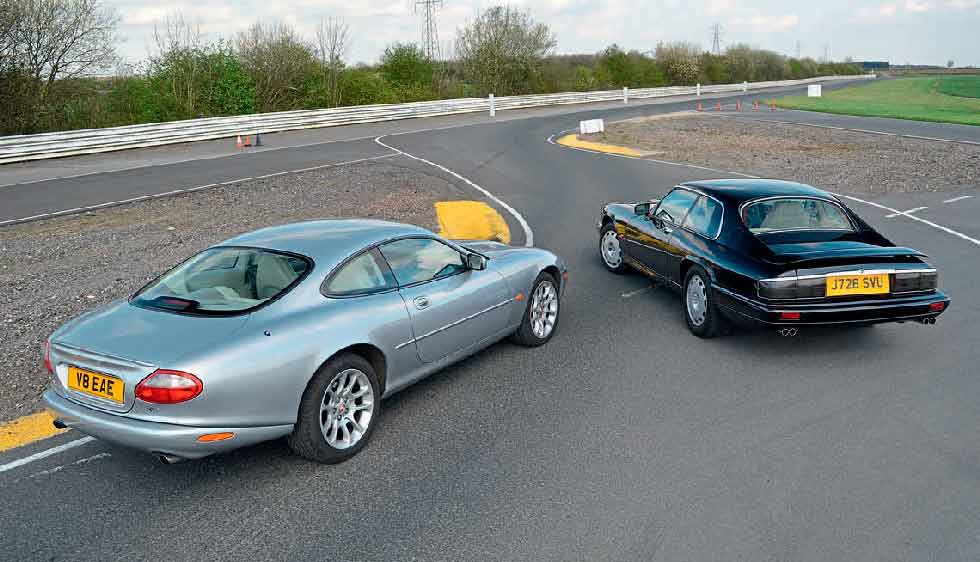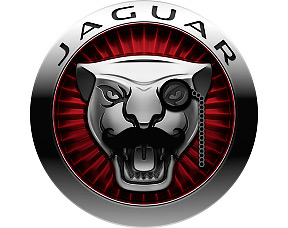
The first of Jaguar’s R-branded cars made its debut in 1988 with the XJR-S V12. In 1996, Jaguar consolidated its new direction with the contrasting XKR 4.0 V8. Poles apart from the company’s previous offerings, they were harder, faster and more muscular. We drive both to see which is best, the refinement of the V12 or the grunt of the V8. Words & photography Paul Walton.
CHANGE OF DIRECTION XJR-S vs XKR
Refined V12 or supercharged V8? We pitch two early R models against each other to discover which is better: the silky-smooth refinement of the XJR-S’ 6.0 V12 or the grunt of the XKR’s supercharged V8
If the E-type defines Jaguar in the Sixties and the XJ6 Series 1-3 exemplifies the Seventies and Eighties, then the R brand must do the 2000s.

While never as popular as the diesel and later SUV models, they are now the backbone of the company’s image, from the S-TYPE R to the ludicrous F-TYPE R.
Yet the brand goes back further – to the late Eighties – the first R models being based on the XJ-S and XJ40. Although they were niche models to begin with, by the time the late Nineties arrived the R-brand had become established, a fact solidified with the first generation of XKR, which was the first Jaguar sports car designed to have an R model from the outset; it was also the second overall to have a supercharged engine, still a key factor to the R brand’s current appeal. With a huge performance and character mixed with the X100’s good looks, the R brand’s success starts with this car, the X100 XKR, more than any other.
But how does it compare to its immediate predecessor, the XJR-S, powered by a mighty 6.0-litre V12 and featuring subtle body and detailing upgrades? It had, after all, set the standard for what would follow. Yet its silky-smooth engine presents a contrasting quality to the XKR’s raucous, supercharged V8.
We compare an example of each, back-to-back, and ask which is better?

The catalyst for the R brand was Jaguar’s success in Group A touring car and Group C sports car racing. In May 1988, JaguarSport – the new, separate organisation owned 50:50 by Jaguar and Tom Walkinshaw Racing – was established to produce sportier versions of the company’s existing cars.
At the company’s launch at the Waldorf Hotel, London, Jaguar’s chairman, Sir John Egan, announced, “The formation of JaguarSport is a logical development of the highly successful motorsport relationship that Jaguar has established with TWR over the past few years, which has brought us the European Touring Car and World Sports Car Championships. It will enable us to apply the experience we have gained on the racing circuits of the world to develop Jaguars aimed at the more specialised requirements of the enthusiast.”

The names cleverly linked them to the XJR series of Group C racing cars: the XJR-S came first, followed a few months’ later by the XJR, the XJ40 version.
Unfinished cars were transported 55 miles from Jaguar’s factory at Browns Lane in Coventry to TWR’s Kidlington premises where they were transformed into Rs.
There was never a straight six version and, other than 50 for the American market, neither was there a convertible model. The XJR-S differed from the standard car by wearing a body kit designed by Peter Stevens, who went on to design the Jaguar XJR-15, McLaren F1 and Lotus Elan M100, among many others. It included colour-coded bumpers, side skirts, a rear apron and boot-mounted spoiler. Although discreet by today’s standards, the kit gave the car a more muscular appearance, heightened by the 15in Speedline alloys. It also reduced drag by around ten percent.
Changes to the suspension included 11 percent stiffer springs, re-valved Bilstein dampers all-round, rear radius arm front bushes that were 20 percent less compliant, stiffer steering rack mountings and re-valved power steering rack mountings. The 5.3-litre V12 was left untouched.
The mechanical changes might have been modest, but the difference was noticeable, as Fast Lane magazine pointed out in an early test of the car. “Even with a standard engine, the XJR-S felt a lot quicker simply because it gave more traction and was less turbulent on uneven roads.”
Released in August 1988, two months after Jaguar’s first win at Le Mans for more than 30 years, the first 100 examples, named Celebration, were all painted in Tungsten Grey with doeskin leather trim. To further set them apart from the production models, the door-treads featured the car’s build number, winning laurels and the JaguarSport logo. Although expensive – in 1988, the XJR-S cost £35,000, £3k more than the standard 5.3 coupe – both it and the first generation of XJR helped to make Jaguar’s image younger and sportier.
Continued Egan at the launch, “There aren’t really any cars like the XJR-S already in the market. The important thing is that we know the demand for it is there.”
A year later, with 300 examples built, the XJR-S adopted the 6.0-litre V12 that had been a TWR option before the formation of JaguarSport. Its extra 648cc was obtained from a special long-stroke crankshaft, which was 78.5mm instead of 70mm. With digital ignition and modified cold-air intakes, power was raised from the standard car’s 291bhp to 318bhp. When the XJS was facelifted in 1991 (which included the deletion of the hyphen from its name), the R-S followed suit, going on sale from January 1992. Differences over the standard car included a new body kit designed by Jaguar’s own studio and, thanks to a revision of its engine management, the 6.0-litre V12 produced an extra 15bhp.

Jaguar claimed a 0-60mph time of 6.5 seconds and a top speed of more than 160mph, putting the car into genuine supercar territory. Not bad when you consider that in 1992 an XJR-S 6.0 cost £49,995, £80k less than the Aston Martin Virage’s list price, even though their performance and image were not too dissimilar.
With the XJS’ replacement still several years away at the time of the facelift’s debut, the R-S helped the then-ageing car to stay relevant. “Without doubt, the latest JaguarSport XJR-S is the most accomplished, potent and desirable XJ-S ever,” reported Autocar & Motor magazine in its 12 February 1992 issue. The XJS V12 – coming with Jaguar’s own 308bhp 6.0-litre V12 as standard from 1993 – marked the death knell for the R-S. Although the 1,130 examples were a tiny percentage of the XJS’ overall 112,052 production run, both it and the XJ40 XJR’s positive impact on Jaguar’s image was good enough for the company to continue with the concept for future models.
It was originally intended that the XJS be replaced in the early Nineties by a new XJ40- based sports car, internally known at Jaguar as the XJ41. It was extremely handsome and its design and development were close to being finished when Ford canned the car following the American giant’s buy-out of Jaguar in 1990; it was deemed too expensive and overly complicated. Ironically, the car would later morph into the TWR-built Aston Martin DB7 – the XJ-S and its replacement’s closest rival. So, Jaguar had to develop another.
Jaguar’s designers knew it was time to head back to the company’s hey-day for inspiration, just as they had with the XJ41 (its E-type-inspired lines led to the unofficial name the F-type).
“Internally, we had a very strong view that the XK8 ought to be the spiritual offspring of the E-type, with muscular flowing shapes and a much sportier look than the XJS,” said Jaguar’s design director, the late Geoff Lawson, in the 6 March 1996 issue of Autocar.
The result was the X100 generation of XK8. On the surface, it was an all-new car, but underneath was a portion of the XJS’ floor pan. Unashamedly influenced by the E-type, the car featured the soft, voluptuous lines the company was once famous for, a move which was welcomed by the critics. “An elegant and rather beautiful car,” was how What Car? magazine described it in the December 1996 issue.
It wasn’t all about the past, because under the bonnet lay a brand new 3,996cc V8, designed by Jaguar and built at Ford’s Bridgend factory. With 290bhp, it had a 0-60mph time of 6.6 seconds and a 155mph top speed, putting it on a par with new rivals from BMW, Mercedes-Benz and Porsche. Importantly, the V8 was more economical than the gas-guzzling 6.0-litre V12, offering 23mpg, as compared to 17mpg.
Because Jaguar and TWR cut ties in the early Nineties due to disputed ownership of the XJ41/DB7 design, the R version was developed in-house.
Unlike for the XJR-S, it would feature a major engine upgrade.
Jaguar had already had success turbocharging the AJ16 engine (for the ill-fated XJ41), and later, when its engine department was developing the X300 XJR, in the early Nineties, it had turned to forced induction for more power. Around the same time, an American engineering company, Eaton, produced a compact supercharger that fit easily into the already tight confines of the saloon’s engine bay. Explained Jaguar’s former chief engineer for powertrain engineering, the late Trevor Crisp, in a 1994 interview, “I thought about how we could get the same sort of power output without changing the rest of the vehicle and without the big disadvantage of turbocharging – the lag.
“At the time, Eaton was developing a supercharger, and although it wasn’t big enough to give us the same power output as potentially the twin turbocharger could, it would certainly be a very significant improvement over a normal aspirated engine.” Crisp’s engineers were more concerned about throttle response than maximum power. “The supercharger would give us a big boost at the bottom end.”
Following the commercial and critical success of the X300 XJR (followed by Jaguar’s first supercharged V8 model, the X308 XJR), the company used the same formula for the XKR. The supercharged V8 produced 370bhp and dropped the 0-60mph sprint to 5.3 seconds. As well as the extra grunt from its supercharged V8, with its larger 18in alloy wheels, bonnet louvres, mesh grille and discreet boot spoiler, it was the first of the genuinely masculine R models that we are familiar with today. The car was a bigger success than the XJR-S, a result of it being built on the Browns Lane assembly line (and, therefore, more mainstream) and available in open or closed forms. Including the 4.2-litre V8model (which replaced the 4.0 in 2002), 23,556 XKRs were made.
But, does this make the car better than the R-S 6.0, and has it still retained the famed XJS refinement despite its own increase in power and a younger, sportier image?
The X100 XKR’s soft lines still look Reasonably modern 24 years after its debut, making it hard to believe that this 1999 Platinum Silver example is just seven years newer than the Black Cherry XJR-S alongside. The latter’s hard, angular design suggests the car is from a generation before, but then, with the XJ-S making its debut in 1975, it is.
Of the two, though, the XJR-S makes a bigger visual impact. Make no mistake, the XKR is a handsome car, but the XJR-S’ ridiculously long bonnet, small cabin and those famous, unique flying buttresses behind the rear screen give it a much bigger presence. The handsome 16in 11-slot alloy wheels and the R-S’ body kit – including a much larger rear spoiler than the XKR’s – increase that self-assurance, and suit the car surprisingly well considering it wasn’t designed at the same time as the XJ-S.
But while the two are not the same on the outside, the character of their interior is. I’m not referring to the design (compared to the simple ‘Spitfire propeller’- shaped walnut veneer that dominates the XKR’s dash, the XJR-S’ interior is dated with hard edges and a confusing layout).
What they share in common is a heavy use of wood and leather, which challenges that image of a harder supercar. That’s because it had been the introduction of a more traditional interior to replace the early car’s sombre black vinyl and plastic that, along with the Cabriolet and more economical HE V12 and AJ6 straight-six engines, had helped the XJ-S to become more successful in the early Eighties.
It was a recipe that Jaguar decided to stick with until the mid 2000s, at which point contemporary materials – such as carbon fibre and the smooth, shiny Piano Black – had been slowly introduced.
Neither interior looks particularly different from their standard counterparts. Only the JaguarSport logo embossed into the leather of the XJR-S’ four-spoke TWR steering wheel sets it apart. I would argue that the XJS is the better built of the two, its interior feeling stronger due to fewer cheap off-the-shelf parts than the XKR. Plus, when I shut the older car’s door, there’s a solid, mechanically pleasing, ‘thunk’.
It takes a second after turning the key for the R-S’ 6.0-litre V12 to churn into life, but when it does it’s extremely quiet; only the rev counter confirms it’s idling. I pull the thin, chromed gear selector down to drive (there was never a manual version of the XJR-S and all cars had a specially recalibrated version of the GM400 three-speed ’box) and slowly squeeze the throttle pedal.
The big car’s acceleration is something of a surprise. Having previously driven an XJS that had Jaguar’s own 6.0-litre, the TWR-built motor is noticeably different: its acceleration has a harder, more aggressive edge, so that even though the performance figures are similar it feels quicker – easier – to reach 60mph. It is slightly louder than Jaguar’s own V12, yet it remains calm inside, and I do a double-take when I notice the speedo needle is already pointing to the right-hand side of the speedometer, even though I haven’t pushed hard (yet).
I gently squeeze the brake pedal for an upcoming corner and the standard brakes scrub off speed instantly and progressively. Despite the car weighing 1,800kg (160kg more than the XKR), it still responds magnificently when I throw it into the following bend. Thanks to the R-S’ uprated suspension, there’s very little body roll, so corners are taken relatively flatly for what is more of a grand tourer than an out-and-out sports car.
However, the steering isn’t as quick or as precise as its replacement and, as I chuck the big car through the corners, I’m always aware of its size.
The XKR’s 370bhp, meanwhile, responds instantly – much quicker than the XJR-S’ V12 and, as I bury the throttle, the engine picks up speed without any hesitation, helped by the Mercedes-Benz-sourced five-speed ’box (used because the ZF ’box in the XK8 couldn’t handle the XKR’s extra power), which kicks down a little faster than the XJR-S’ three-speed unit.
The engine sounds fabulous too: a deep, throaty, baritone growl when under acceleration that’s matched with the atmospheric whine of the supercharger, sadly missing from today’s supercharged Jaguars. Yet it lacks the refinement of the V12, that subtle ‘whoosh’ after squeezing the throttle.
Although the XKR is a heavy car by today’s standard, the steering is more precise than the R-S’ and I can scythe through corners accurately.
Handling is also excellent. Thanks to every XKR coming with Jaguar’s CATS (computer active technology) as standard, there’s little body roll, so the car feels more firmly planted to the asphalt than the XJRS. This means I can take corners faster, as well as more accurately. The XKR also has a better ride quality than its predecessor and isn’t as harsh over uneven surfaces. With the supercharger still on song, the engine responds instantly as I bury the throttle again and exit the corner carrying plenty of speed for the following straight.
This particular XKR might be more than 20 years old, but the way it moves and delivers its power is more akin to a modern car, more so than the XJR-S, which, although modified by TWR, was still a 17-year-old design when this example was made. Even though I own a normally aspirated XK8, I think the XJR-S is the more desirable of the two.
Yes, the XKR is a handsome car, with close to perfect proportions, but it’s a comparatively normal – traditional – looking coupe, as are both the X150 XK and F-TYPE coupes that followed.
In terms of design, the XJS has always been a one-off in both Jaguar’s own canon of work and European sports car design as a whole. The extra additions that were part of the R package only add to its unique handsomeness, making the car appear more aggressive. Plus, now that it’s recognised as a genuine classic, its foibles are more acceptable, if not even welcomed.
So, why don’t I own an XJR-S rather than my XK8? It’s because it is much rarer than the XKR 4.0 its prices are, unsurprisingly, higher – a post-facelift example in good condition like the one here is worth in excess of £30k. XKRs, by comparison, start at less than five grand for a coupe up to £15,000 for a low-mileage convertible.
However, they are equally as brilliant, and set the standards for later models, including the F-PACE SVR. You might think an SUV has little in common with either, but as a luxurious, comfortable and fast four-seater, it is today’s equivalent, more so than the current F-TYPE R.
The change of direction that the R brand represented was huge, and the positive impact it continues to have on Jaguar’s cars and image shows it was clearly the right way.
1992 Jaguar XJR-S 6.0
Engine 5,993cc V12
Max Power 333bhp
Max Torque 365lb ft
0-60mph 6.5secs
Max speed 158mph
Transmission 3-spd auto
Price new £49,995
Value now £25k-£35k
1999 Jaguar XKR 4.0 X100
Engine 3,996cc SC V8
Max Power 370bhp
Max Torque 363lb ft
0-60mph 5.4secs
Max speed 155mph
Transmission 5-spd auto
Price new £60,105
Value now £4k-£13k






